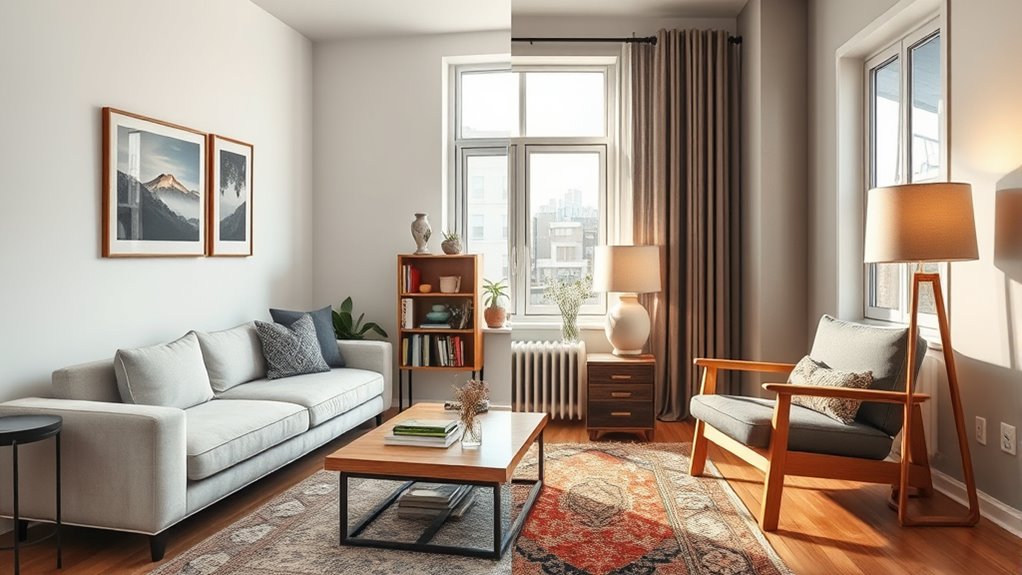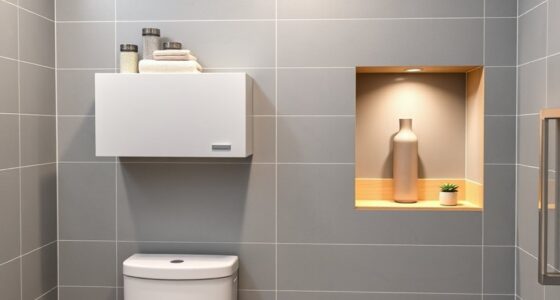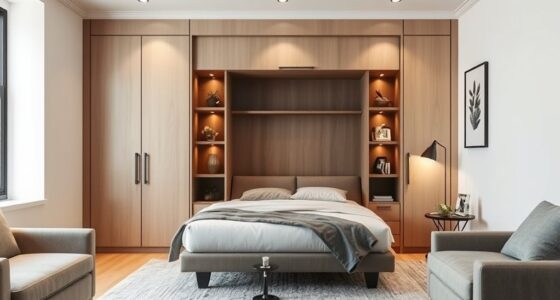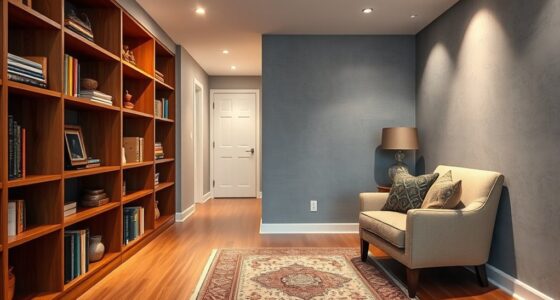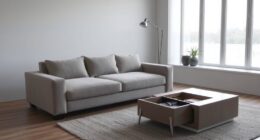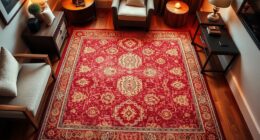Deciding whether to rent or buy furniture depends on your lifestyle and budget. Renting offers flexibility to change styles easily and keeps initial costs lower, ideal if you move often. Buying furniture can save money long-term and allows you to customize your space. Consider your moving plans, maintenance preferences, and personal style. To find the best option for your needs, explore the details below to make a smart choice for your apartment.
Key Takeaways
- Renting furniture offers flexible style updates and easy transitions, ideal for short-term or evolving living arrangements.
- Buying furniture is more cost-effective long-term due to one-time investment and fewer ongoing expenses.
- Owned furniture allows full customization and personalization to match your style and space.
- Rental furniture simplifies moving logistics with professional pickup and setup services.
- Maintenance responsibilities differ: owners handle upkeep, while rental providers manage repairs and damages.
Comparing Costs and Budget Considerations

When deciding between renting and buying furniture, understanding the cost differences is essential. Renting furniture typically costs around $2,400 per year, which can add up quickly and often exceeds the purchase expense over time.
Buying furniture involves a one-time investment, leading to lower long-term savings and better furniture costs if you plan to stay long-term. Rental costs include ongoing payments, deposits, delivery fees, and service charges, making it a less economical choice for sustained use.
In contrast, buying provides a clearer financial value, with fewer ongoing payments and a solid cost comparison favoring ownership after several months. Consider your budget considerations carefully—while renting offers flexibility, buying furniture often delivers a more cost-effective solution in the long run.
Flexibility and Lifestyle Adaptability
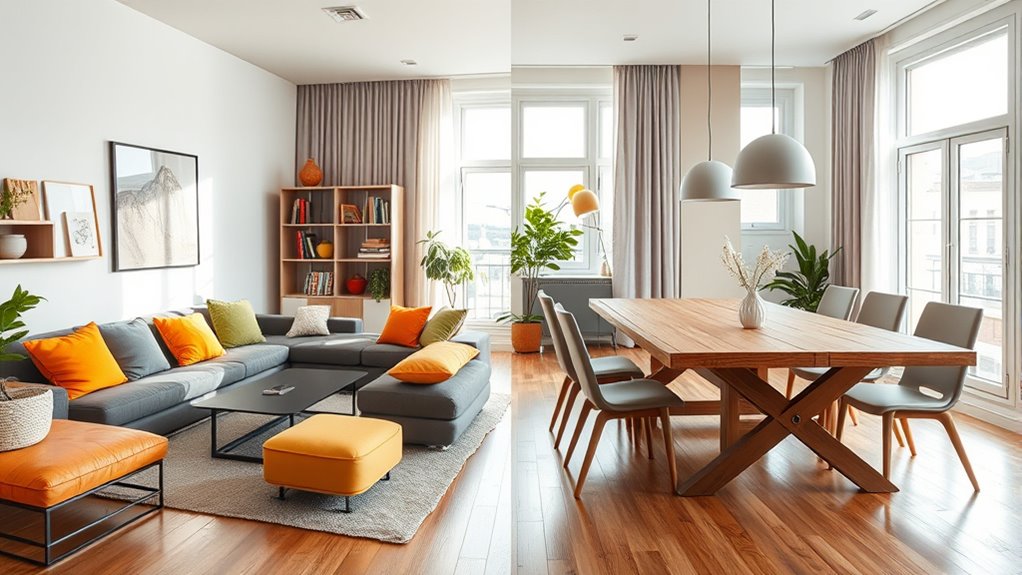
Renting furniture provides unmatched flexibility, allowing you to easily change styles, update pieces, or adjust rental durations as your lifestyle evolves. Rental options let you adapt your interior design quickly without the long-term commitment or hassle of selling furniture. Whether you need to customize your living space or switch furniture choices, rental agreements often offer flexible lease terms that suit your changing needs. This adaptability makes it easier to move, especially since rental companies typically handle pickup and delivery, easing the logistical burden. Short-term rentals are perfect for temporary stays or transitional phases, giving you the freedom to create a space that reflects your current lifestyle. Embracing remote work can also influence your furniture choices, making rental options even more practical for dynamic lifestyles. Additionally, opting for rental furniture supports sustainable living by reducing waste and promoting responsible consumption. Moreover, some rental companies now incorporate alternative investments like gold into their financial offerings, showcasing the evolving ways to diversify and adapt your financial strategies.
Maintenance and Long-Term Care
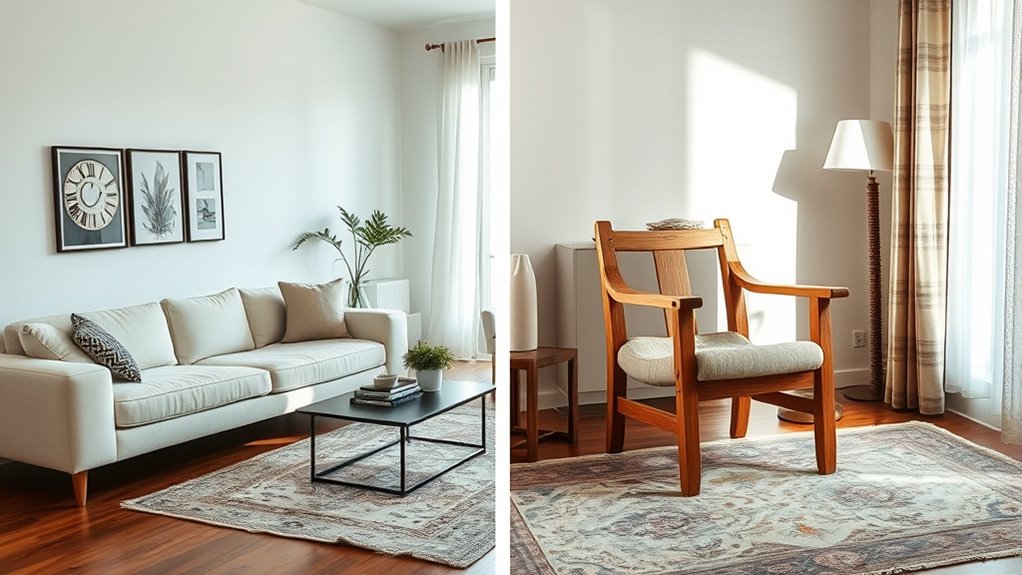
Maintaining owned furniture gives you full control over cleaning and repairs, allowing you to address issues at your convenience without extra charges. Proper upkeep and regular care routines help extend the longevity of your furniture and reduce long-term repair expenses.
You can easily perform cleaning to prevent dirt buildup and spot damage early, avoiding costly repairs later. Unlike rental furniture, where damage management involves damage penalties and repair costs imposed by the provider, owned pieces let you manage repairs on your schedule. This flexibility reduces stress and ensures your furniture stays in good condition.
Impact on Personal Style and Space Customization
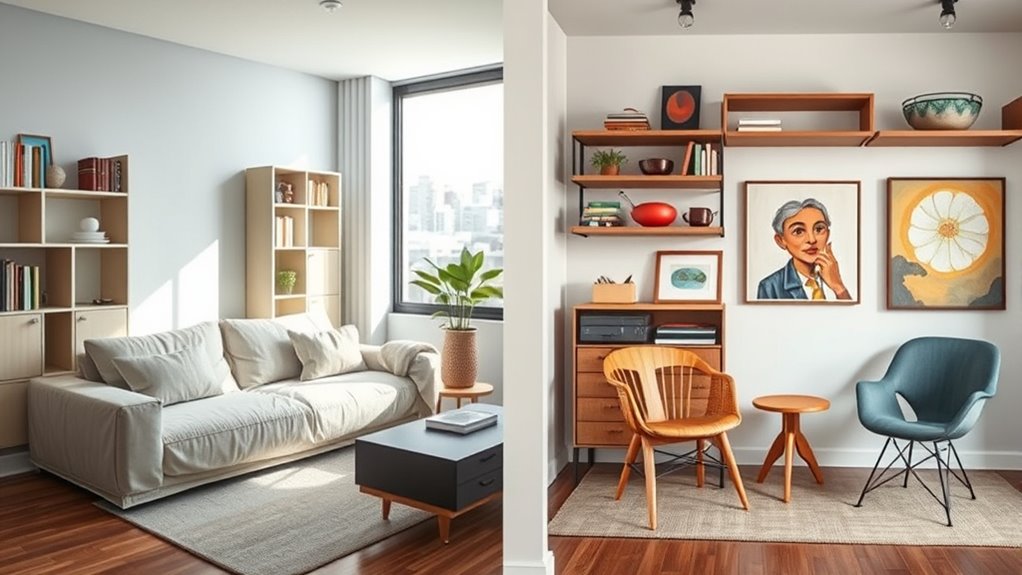
Owning furniture gives you the freedom to select pieces that truly reflect your personal style, allowing for a cohesive and unique space. With owned furniture, you can:
- Personalize decor through custom paint, upholstery, or modifications.
- Adjust furniture to fit your space perfectly, enhancing design flexibility.
- Evolve your aesthetic over time without restrictions, supporting your aesthetic evolution.
- Express individual style through curated pieces that mirror your personality.
- Incorporate interior design principles to create balanced and harmonious arrangements tailored to your tastes.
- Additionally, owning furniture enables you to select quality materials that ensure durability and comfort over time.
- Implement best practices in furniture selection and arrangement to optimize space utilization and style coherence.
- Furthermore, understanding furniture durability can help you choose pieces that will stand the test of time and usage.
Practicalities of Moving and Reselling

Moving furniture can be a logistical challenge, but your choice between renting and owning considerably impacts how smooth the process will be. Renting simplifies moving with easy pickup and return services, reducing disassembly, transporting, and setup worries. Owned furniture requires effort for disassembly, moving, and reselling or donating afterward. Reselling can recoup some costs, while rental payments don’t offer ownership benefits. Rental companies often include damage protection, maintenance, and repair, minimizing risks during relocation. In contrast, owned furniture may incur costly damages or repairs. Consider the table below for key practicalities:
| Aspect | Renting | Owning |
|---|---|---|
| Moving | Professional pickup, setup | Disassembly, transport, manual setup |
| Reselling | Not applicable | Can resell after relocation |
| Damage Protection | Included in rental | Usually separate, potential costs |
| Maintenance | Provided by rental company | Owner handles repairs and upkeep |
| Relocation ease | Streamlined with rental services | More effort, time-consuming |
Additionally, understanding the logistics of moving can help you plan more effectively and choose the most convenient option. Proper planning ensures a smoother transition, especially when coordinating with home decor elements like wall organization and furniture placement. Being aware of entertainment park hours can also help you schedule your moving day to avoid peak times at local parks or attractions.
Frequently Asked Questions
Should I Rent Furniture for an Apartment?
You should consider renting furniture if you need flexibility or have a short-term stay.
Renting keeps costs low upfront and lets you access stylish, high-quality pieces without long-term commitments.
It’s easy to move or return the furniture when your plans change, saving you hassle.
If you value convenience and adaptability, renting is a smart choice that fits your lifestyle without the burden of ownership.
Is It Cheaper to Rent or Buy Furniture?
When deciding if it’s cheaper to rent or buy furniture, consider your length of stay.
If you plan to stay long-term, buying is usually more economical because rental costs add up over time and don’t build equity.
For shorter stays, renting can be cheaper and more convenient since it avoids large upfront costs and storage issues.
Think about your needs and duration to make the best financial choice.
Is It Better to Rent or Buy Office Furniture?
Imagine you’re opening a new office for a year-long project. Renting furniture lets you access modern, ergonomic pieces without a big upfront cost, and it’s easy to reconfigure or relocate.
If you plan to stay long-term, buying might save you money over time and give you customization options.
Consider your needs: short-term projects favor renting, while permanent spaces benefit from purchasing for better value.
Is It Better to Rent a Furnished Apartment?
When deciding if renting a furnished apartment is better, consider your needs.
If you want convenience and flexibility for a short-term stay, renting saves you time and effort, as all essentials are included. It also offers predictable costs and eliminates the hassle of moving furniture when you leave.
If you prefer less commitment and a hassle-free setup, renting a furnished apartment is a smart choice for your lifestyle.
Conclusion
Ultimately, whether you choose to rent or buy, it’s about creating a space that feels like home without weighing down your spirit. Renting offers gentle flexibility, while buying grants you the warmth of permanence. Think about what aligns with your dreams and lifestyle, and remember, every choice shapes the story of your sanctuary. Trust your instincts, and let your home reflect the beautiful journey you’re on.
